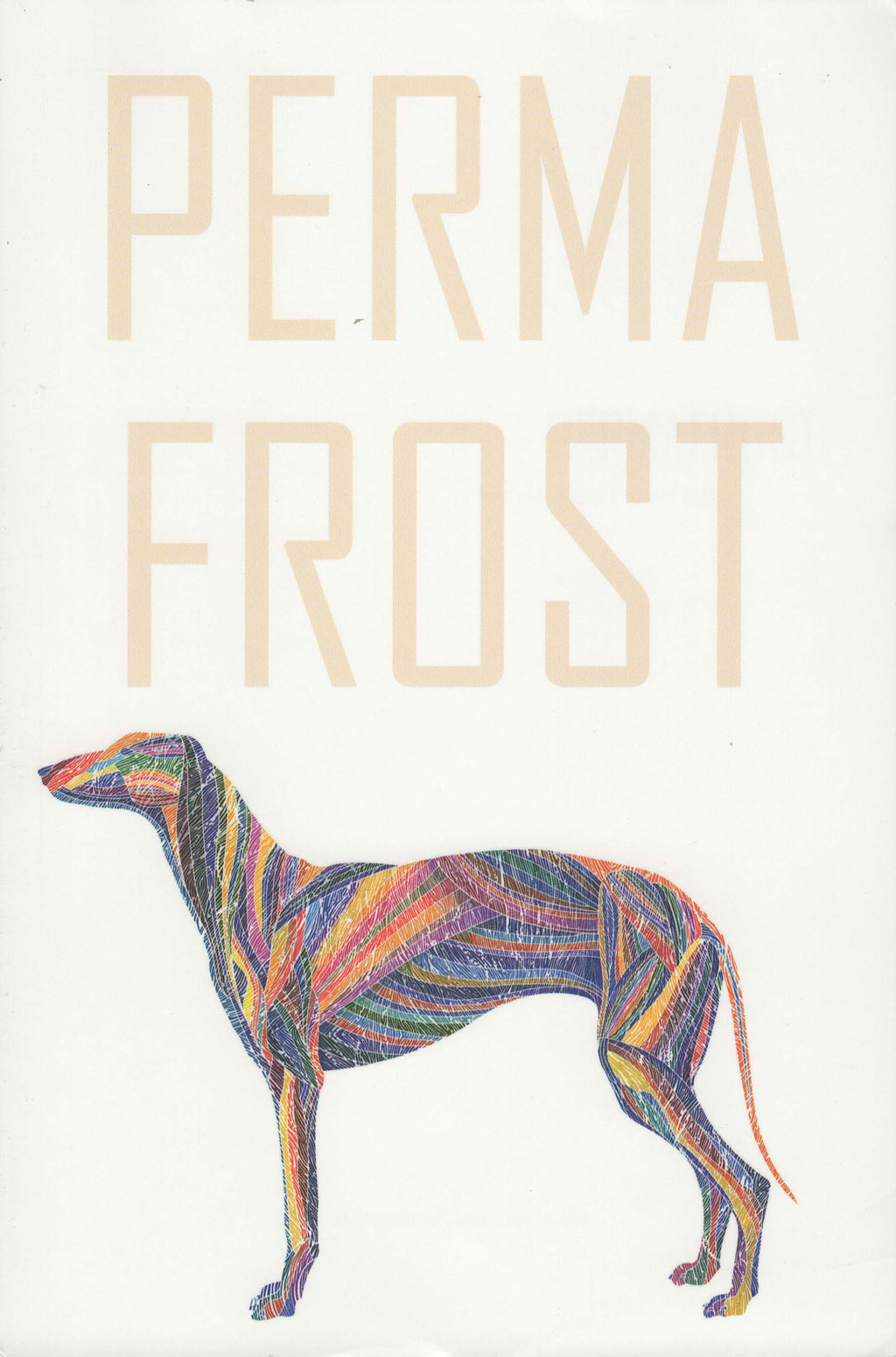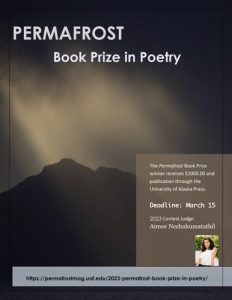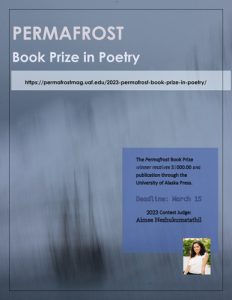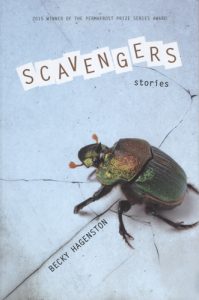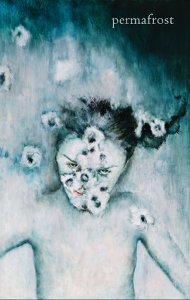Permafrost – Winter 2014
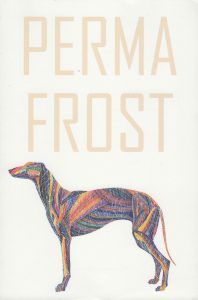
Permafrost is an unusually entertaining collection of fiction, nonfiction, poetry, book reviews, drama and art published in “the farthest north literary journal in the United States.” All of the works provide perspectives that are fresh and introduce a broad variety of creative talent that doesn’t often appear in the same place. If there’s one characteristic throughout the entire collection, it’s the detailed imagery.
All of the fiction, such as Raymond Fleischmann’s “The Stuff of Strangers,” draws us in with descriptive detail:
A mass of beer bottles were scattered around the remnants of a fire. Now that he was looking, Thomas noticed how many cigarette butts covered the ground, hundreds of them dotting the floor like specks of quartz, [ . . . ] Thomas’ left calf had broken out in blisters so swollen and juicy that it looked as though cranberries were growing from his skin.
The nonfiction is one of the best choices in this issue. Khan Ha’s “The American Prisoner” takes us to a time and place that is fictionally familiar to most but has a real, historical context that few think about: the viewpoint and relationship of a North Vietnamese guard to an American prisoner of war. Ha writes:
He was one of the first American prisoners of war I saw. He could speak Vietnamese and, unless in long sentences, he had only a slight accent. [ . . . ] His legs were messed up badly from one of our hand-made mines. A piece of metal from the mine was still lodged in his head.
Similarly, Warren Rhodes “Blowback” gives us both a view of the past, and provides us with insight into our own feelings and relationships:
In the human cremains trade, when ashes coat the scatterer, presumably unintentionally, it’s called ‘blowback.’ Dispersers who fail to check the prevailing wind before uncapping the urn or broaching the baggie . . . often suffer a distasteful if remediable, fate.
Of particular note is that much of the poetry is in a repeated pattern for rhythm, metrics, imagery and idea flow. For example, Lillo Way’s “Hey Ho Nobody Home” reads, “frozen grass flats as far as your eye will see / under an old weeping willow stripped tearless / the sky an aluminum sheet prone on top of it.”
Or Doug Ramspeck’s “Night Song of the Primitive Arts”:
If we are lovers, we are the black waters
that make a song, the earth that utters to the moon
or appears to press a nub of hill against
a cloud. Or say this is our first
memory, stars burning.
Perhaps the particular form has become popular among Permafrost readers or the contributing poets. It provides a consistency of perspective and involvement.
The effect of the artwork section is limited by the printed page, but we are shown eight pages of digital prints, and photo, ceramic, mixed media, plastic, oil, and acrylic works. They provide an invitation to view the actual works and stimulate an interest in the artists.
The University of Alaska Fairbanks has done us all a service by providing a home for an enjoyable literary and artistic journal.
[www.permafrostmag.com]
Permafrost Volume 36 Issue 1, Winter 2014 review by Mitchell Jarosz

